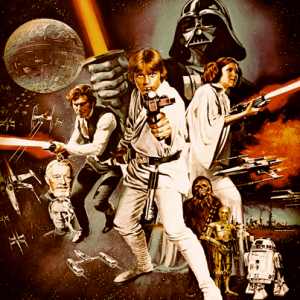Archetypes & mythic elements

Archetypes are according to C.G. Jung prototypical and culturally independent but reoccurring symbols. As prefigurations of the sub-consciousness they represent basic patterns which can be used for character development.
Ariadne’s Thread ^
Ariadne’s Thread is a secret thread symbolising the power of love. It represents a telepathic connection between lovers.
Watering Hole ^
The watering hole is the mythic gathering place where one can observe and collect information. It’s used to discuss how to proceed further, to develop a plan, to change strategy, to start preparations, to allocate tasks and responsibilities and to re-organise.
Campfire ^
A Campfire scene offers a break for recreation where characters regain their strengths, rest and rejuvenate. It’s used for aftermath and reflection and is marked by the realisation that from now on nothing will ever be the same. In its dramatic function as lyric passage and break it offers the characters as well as the audience a chance to catch their breath and review what happened so far.
Anima and Animus ^
According to C.G. Jung anima is the female element of the male unconscious and animus the male element in the female unconscious. In dream sequences the male protagonist meets his anima / the female protagonist meets her animus.
Archetypical characters ^
Archetypical characters always have the same relationship constellation. On an emotional level they are easily grasped by the audience as they intuitively recognise their underlying universal pattern. Furthermore they push the plot forward in their functional role by supporting the hero or challenging him and obstructing his journey with obstacles and dangers. As archetypes mirror ancient human characteristics they may also be understood as personified symbols of human features. To supply an archetypical character with depth and complexity beyond the mere stereotype one should combine several archetypical as well as individual characteristics.
Hero ^
The hero offers the audience a window into the story. They can watch the story from her point of view and can identify with her.
In a psychological sense the hero represents the ‘ego’ – the ‘I’ – according to Freud, i.e. the individual that considers itself distinct from the rest of the group and searches for identity and wholeness. This leads to the need of the hero – to become a wholesome, complete and balanced person.
In a tragedy the tragic hero is innocently guilty. In a comedy there is the option of the comic hero. The hero’s counterpart in a (post)modern world that is becoming more and more complex and ambivalent is the antihero: dis-embedding and alienation processes made him a degenerated type of hero. Whether as underdog or outlaw the antihero represents an outsider of society.
Mentor ^
Mentor and hero are in a teacher-student-relationship. Mentors used to be heroes who are now admired as legends. By passing on his experience to the hero, the mentor prepares her for the upcoming events. In his role-model function he encourages, supports, advices, protects, trains and leads the hero. He provides her with tools, knowledge and self-confidence. In a psychological sense the mentor embodies an idealised projection of the hero / a higher Self (Freud): the nobler, wiser and godlike part of herself.
Herald ^
The herald forces the hero to act by delivering crucial news. In her function as a medium she announces the need for change to the hero. Psychologically she represents the hero’s motivation, an inner bell, calling him to face the challenge.
Threshold Guardian
As ‘warden of peace and order’ the threshold guardian represents the preservation of circumstances. He blocks the hero’s path when she’s about to enter a new world and prevents her from passing. The hero has to react by turning around and running or by accepting the challenge. She can try to get by, meet him head-on, appease or bribe him, deceive him or make an ally of him. On her journey the hero may be confronted with several threshold guardians. Their dramatic function is to test the hero’s maturity. Their psychological function is to represent the inner demons of the hero made up of neuroses, emotional scars and dependencies.
Shadow ^
The shadow is a destructive power that takes over the hero to destroy him. It represents the hero’s unconscious, his fear of failure, repressed feelings, dark emotions and self-destructive behaviour: his suppressed fears and frustrations, his unchannelled rage and grief, his unfulfilled creativity and sexuality. Its dramatic function is to challenge the hero and evoke a life-threatening situation.
Trickster ^
The trickster is the enemy of the status quo and the friend of anarchy, provocation and schadenfreude. He is the subversive power, the energy of mischief undermining the existing order. His behaviour as evil clown or mischievous troublemaker creates comic relief by resolving backed-up tension in a humorous way. His dramatic task is to secretly encourage the hero’s desire for change and therefore speed up the confrontation. Furthermore he unmasks the hero’s ego through humour.
Shapeshifter ^
The shapeshifter changes from the hero’s best friend to worst enemy during the course of the film. He misleads the hero, blinds and manipulates her.
By keeping her guessing, she and the audience can never know where his loyalty lies. His dramatic function is to bring doubt and tension into the story. Psychologically he represents the anima / animus energy of the hero.
Examples for other archetypes are: mother, father, warrior, fighter, rebel, king, princess, lover, abandoned one, femme fatale, judge, wise man, prophet, priest, artist, fool, foreigner, wild man, constant companion.
 Further Reading
Further Reading
• Campbell, Joseph: Hero with a Thousand Faces. London 1993.
• Vogler, Christopher: The Writer’s Journey: Mythic Structure for Writers. California 1998.


Comments are closed.